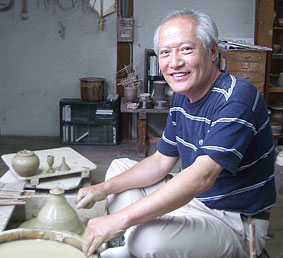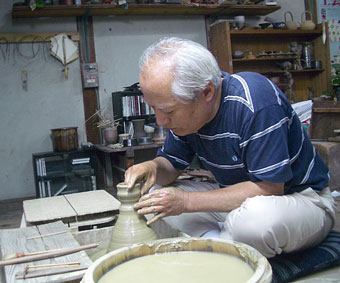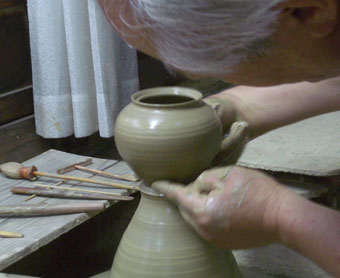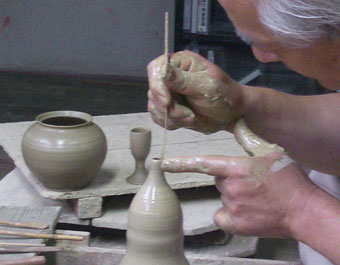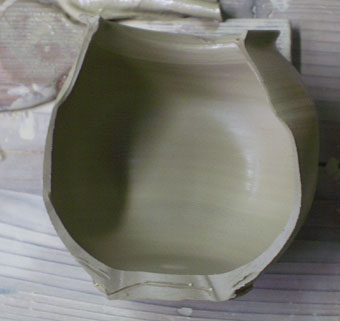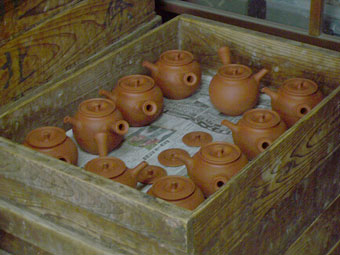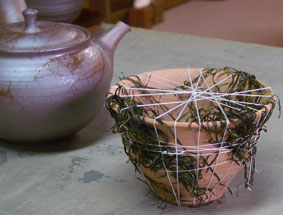It goes without saying that good teapots are both attractive and functional. These Tokoname teapots are actually much lighter than they look, as the weight of the boiled water is also taken into consideration during the creative process. Please refer to the photo on the left to appreciate the thinness of the walls of the body. During firing, excess moisture is expelled, shrinking the walls even further.
*Not all Tokoname teapots are made in the same way. Some craftsmen may prefer to make their teapots thicker in order to achieve a certain effect.
